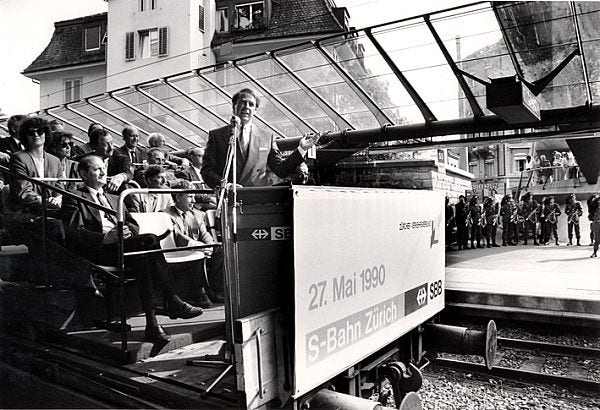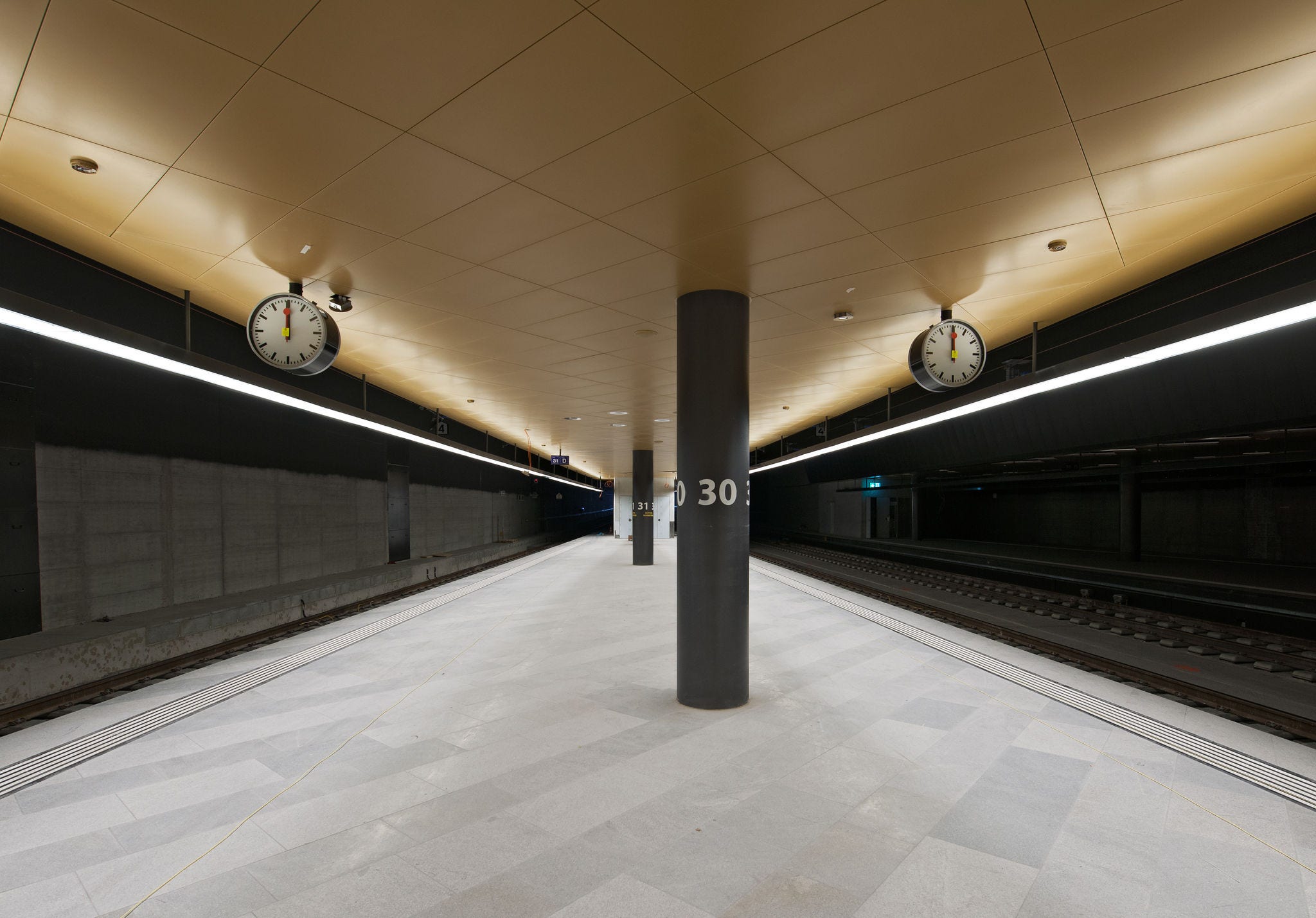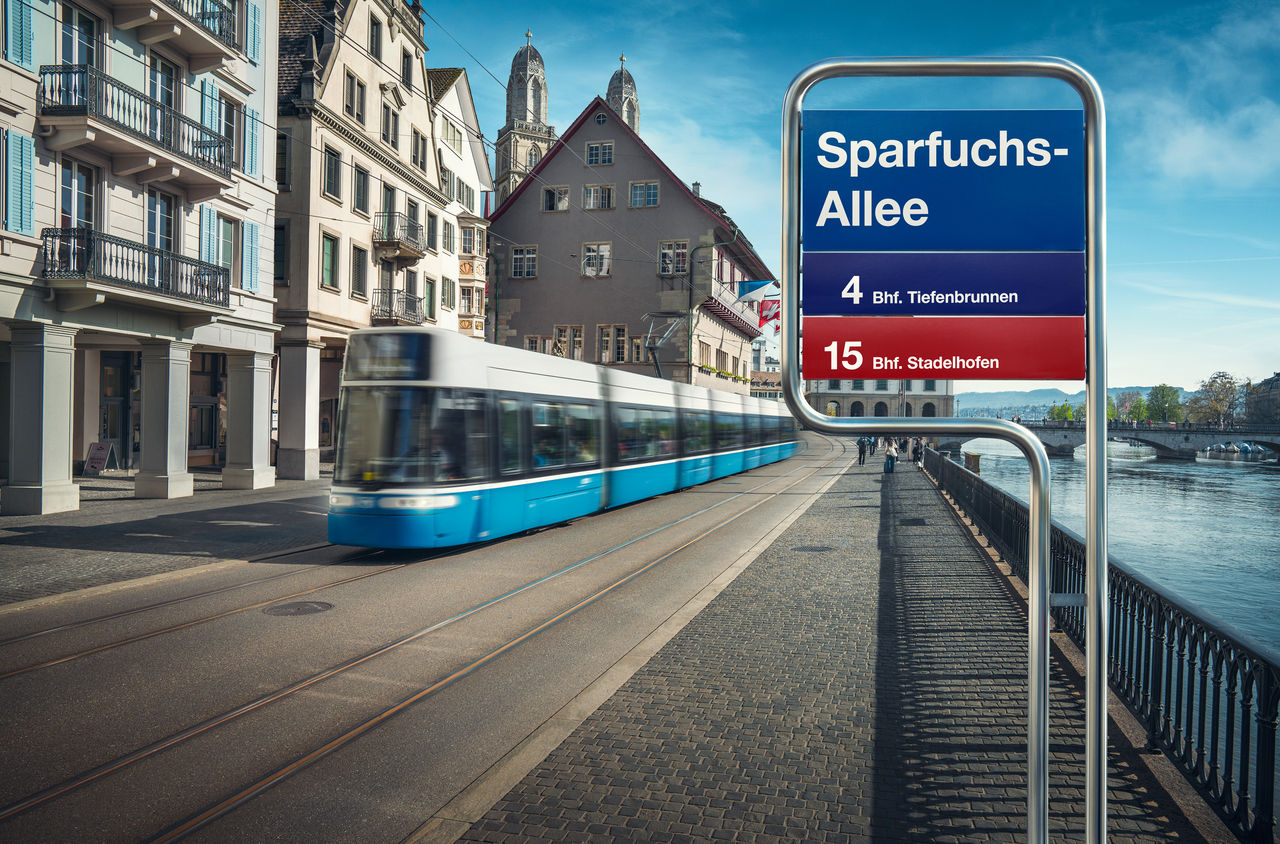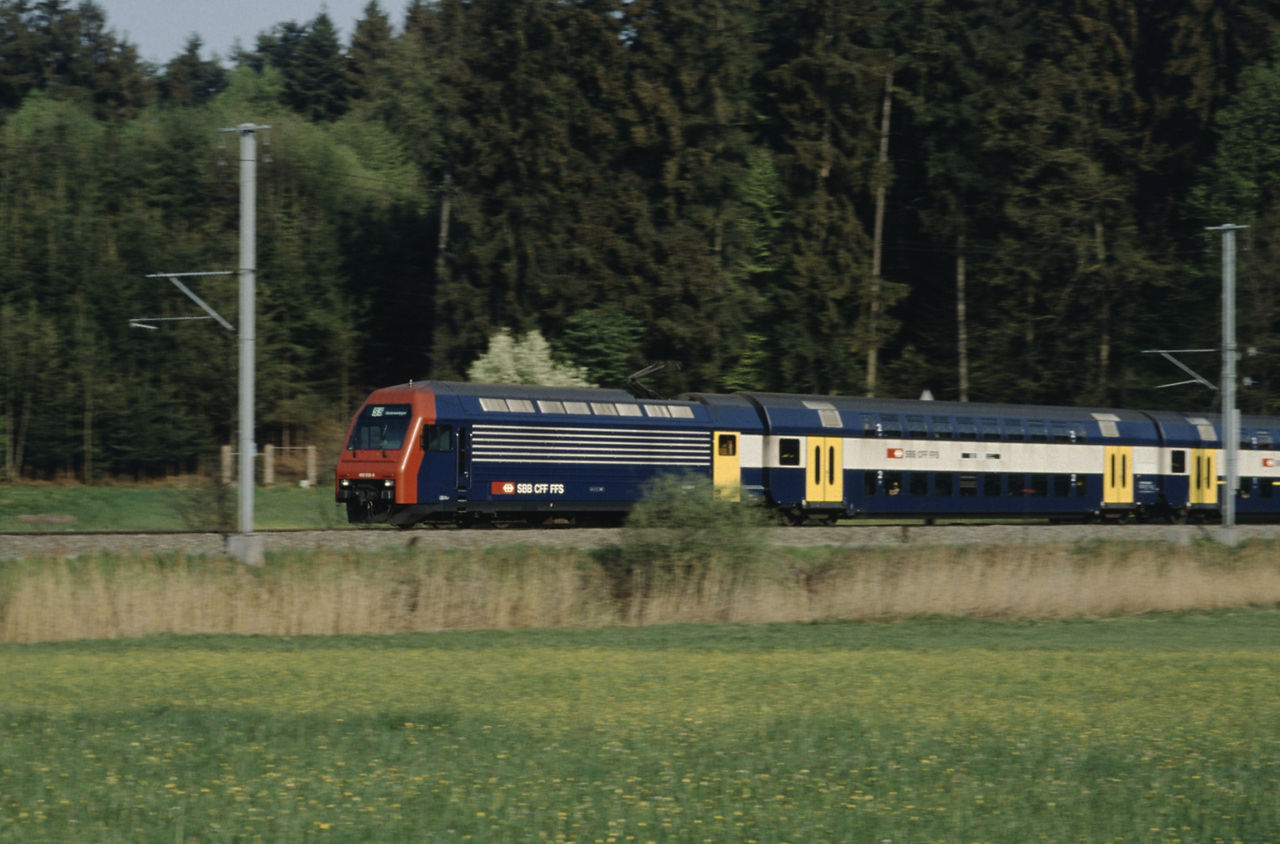History
The Zurich Transport Network – Switzerland's first transport network – has been serving passengers since 1990.
More than 30 years ago, Zurich voters laid the groundwork for today's S-Bahn. While the proposal for a combined U-Bahn and S-Bahn system was rejected in 1973, a standalone S-Bahn network was approved in 1981. In 1988, the electorate also gave clear support to establishing the legal framework for the Zurich Transport Network.

Launch in 1990
After nine years of construction, the first Zurich S-Bahn train arrived at Stadelhofen station on 27 May 1990. This marked a milestone for the Canton of Zurich, which had invested nearly 700 million francs in public transport development. Central to the S-Bahn system were the low-level Museumstrasse station, the Hirschengraben and Zürichberg tunnels, and the Stadelhofen and Stettbach stations. Additionally, the Sihltal-Zurich-Uetlibergbahn network was extended to reach the main station.
Switzerland's first transport network
The Zurich Transport Network (ZVV) began operations in 1990, introducing a concept that was innovative for Switzerland: uniting various transport companies under a single system. Instead of operating independently with separate fares and defined areas, these companies became parts of a cohesive network. The ZVV oversees strategic objectives, financial management, and marketing, while transport companies focus on delivering transport services. Increased customer satisfaction has more than compensated for the reduction in business autonomy.
Constant expansion of rails
Success came quickly, with certain ZVV lines soon reaching capacity limits. Since the S-Bahn network's launch in May 1990, passenger numbers have more than tripled.

The S-Bahn network has undergone four major expansions, with the fourth phase implemented between 2014 and 2019, including further infrastructure extensions. These investments were essential to accommodate the anticipated growth in public transport demand in and around the Canton of Zurich. A key milestone was achieved in 2014 with the opening of the Löwenstrasse underground through-station, followed by the full commissioning of the cross-city link at the end of 2015. These developments significantly increased the capacity of Zurich Main Station, the hub of the S-Bahn network.
Extensions also in light rail and bus services
The effectiveness of the Zurich S-Bahn expansions relies on seamless connections to the urban and regional networks. To achieve this, continuous infrastructure investments are made in these areas, with tram and bus services adjusted accordingly. This ensures more frequent and efficient travel chains.
Since 2010, the Glattal line has connected Zurich North with mid-Glattal and the airport. In 2017, the Hardbrücke S-Bahn station was integrated into Zurich’s tram network with a new line across the bridge, directly linking Zurich West to the city centre. This complements the 2011 tram extension to Altstetten, further enhancing network integration.
In the Limmattal region, the Limmattal line addresses population and employment growth by connecting Zurich Altstetten to Killwangen-Spreitenbach, serving S-Bahn stations along the route. The first phase to Schlieren opened in September 2019, with full commissioning planned for 2022.
Since 2002, the ZVV nighttime network has provided round-the-clock public transport connections on Friday and Saturday nights, quickly becoming a success. Accessibility for passengers with mobility impairments has also significantly improved, with features such as low-floor vehicles, level stops, and ticket machines equipped with special functions for the visually impaired.


